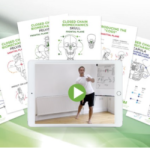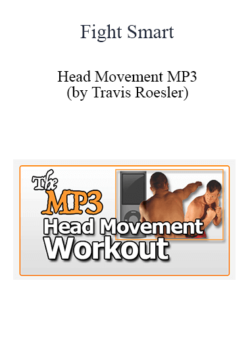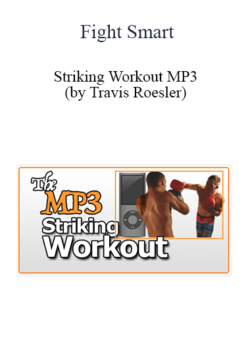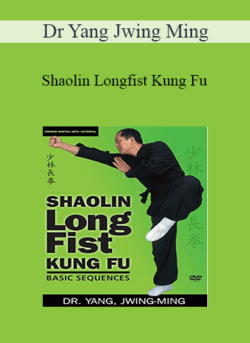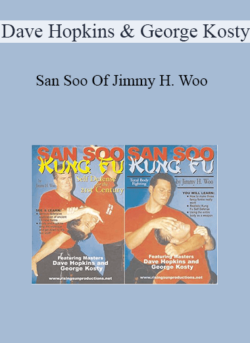Salepage link: At HERE. Archive: https://archive.is/MfIQxTotal sizes: 13.5 GB – include: Buy now $59 $159, Biomechanics Of The Upper Body In Motion 2023 – Gary Ward Course.CPD Certified Course14 Hours of CPD points with this courseA CPD Certificate of Completion will be issued automatically on 100% course completion (including all quizzes)!Course descriptionYou can take advantage of our Lower Limb, Upper Body & Assessment Bundle and buy both courses for £297This programme follows on from the Closed Chain Biomechanics of the Lower Limb course – it is advised that you complete that course first before embarking on this one. Though it’s not strictly necessary, it is recommended as the two programmes come together at the end of the upper body programme to enable us to start looking at the mechanics of the whole body. The detail included in the Lower Limb programme is NOT included in this programme. Both together will form the pathway for future learning with Anatomy in Motion.The intention of this online course is to introduce you to the three dimensional movements of the Upper Body so as to begin to understand the simplicity of whole body movement and how the body is perfectly set up to effortlessly move through the gait cycle.We operate in a world where neutral spine is important, even vital for good spinal health. My interpretation of this is that to find neutral, or as I like to call it, centre, it is vital that the human body is capable of moving evenly to both sides of centre to stimulate all muscle’s and maximise the movement of all joints so that the brain may begin to recognise where exactly that centre is, where exactly neutral spine is and begin to perform all movements from close to that point.There are 24 bones that make up the cervical (7), thoracic (12) and lumbar spine (5). In order to achieve efficient movement of the structures, there can be no limitations in the movement of any of the relevant joints. Where limitations are present so the overall shape of the upper body and the quality of movement in the spine is immediately compromised. Did you know that there are a limited number of body shapes that optimise the movement of the spine when observed through the motion of the pelvis, the ribcage and the skull. Add on the shoulder girdle which responds directly to the ribcage and vice versa and you can see the integrated and inter-connected movement potential of the structures of the upper body.For information, I walk you through the detail of each structure (pelvis, ribcage and skull) in each of the three dimensions and how the movement of each impact directly on the relative spinal segment. This not only enhances your appreciation of spinal motion but gives you specific reference points to use in observation and your assessment thereof. This creates the baseline to build out our eight body shapes. Using my second big rule of motion “Joints ACT: Muscles REACT”, we then begin to observe a multitude of muscles and how they respond to these body shapes giving us a real chance to observe each muscle’s role in motion. Our next step is to bring the LOWER BODY course back to the fore and in essence place the upper body shapes on top of the leg shapes we previously observed. Finally we use my What The Foot? Aliens to create an example of how I work in the assessment of resting posture, to make sense of a person’s resting whole body position, make sense of why certain discomforts are present in a person and what we are able to do to unwind these postures and create movement specific exercises to help us all find centre once again. Natural support for this programme comes in the form of my book “What The Foot?”, and our other online self-assessment programmes.InstructorGary WardFounderI am Gary ward founder of Anatomy in Motion and creator of the Flow Motion ModelTM. Author of What The Foot. I teach, treat, travel and parent This work came about out of a deep curiosity of mine to understand HOW things move. As an all-round sportsman, I loved football, tennis, golf, swimming and skiing. Of later years I spend the majority of my time rock climbing both indoors and out. As a skier I was lucky enough to be introduced to the world of feet and taught very specifically how to fit a ski boot to a foot. I learned about and worked with feet over seven ski seasons developing an instant fascination for the rest of the human body. I qualified as a Personal Trainer and Sports Therapist and eventually began questioning the status quo of education in this area. Countless courses to help with back pain or how to work out “correctively” kept coming up blank until I began bringing the feet back into my work – why was nobody else talking about feet?As a Personal trainer, all of my work was done stood upright on the mats. When I put feet together with the rest of the body in this upright environment, I instantly recognised that they played an important part in the movement potential of the upper body. Change the feet, change the upper body. I discovered that feet actually move. Feet are not designed to be stabilised and locked down in orthotics. We can create that movement in our feet and this miraculously, somehow, changed the possibilities for movement higher up. Alleviating the stresses that the upper body was experiencing. Movement in our feet is of paramount importance for the liberation of our human body. I investigated the movement relationships from the feet upwards until I had mapped out the whole gait cycle; what I now call the Flow Motion ModelTM. The journey of every single bone through three dimensions for the duration of a single footstep. To my mind nobody else has done this. I aim to publish it as soon as I can – a work that has been ongoing for nearly four years now. This has lead to some interesting times. New ways of educating bodyworkers. New lines of work for people in pain. New possibilities for assessing your own body and thus the possibility of taking ownership of your own body and no longer having to rely on the outdated practices that are common in our industry.We don’t seek to heal the problem. We seek to create an environment in your whole body that creates the opportunity for healing to take place. On a much higher level – moving from a local level to a systemic level. To heal the whole system through movement alone is the goal and I believe is also a very distinct possibility. Integrated movement has the possibility of taking pressure of your whole system.In this online education area you have the opportunity to take ownership of your body’s physical (and systemic) wellbeing while also learning the truth about human movement and using the principles on both yourself and your clients.I urge you to take responsibility and ownership of your education as well as your body. It’s your finest guide for learning about the subject of anatomy and is also the vehicle you were given to explore life with. I hope to enable you to wake up parts of your body you have long been trying to awaken and to thrive in a body that you not only understand but come to respect in a whole new way as well.Course curriculum1) – Introduction to Biomechanics of the Upper Body In MotionWelcomeHow Much Will You Learn & Understood?An Introduction To Finding CentreAbdominal MusclesPlanes Of MotionPlanes of Motion QuizBig Rule OneBig Rule One QuizBig Rule TwoBig Rule Two QuizBig Rule ThreeBig Rule Three QuizRules One, Two & Three Applied to the AbdominalsRule One, Two & Three applied to the Abdominals QuizSection 1 – PDF Manual2) – Closed Chain Biomechanics – Pelvis, Ribcage and SkullClosed Chain Biomechanics of the Pelvis (Sagittal Plane)Closed Chain Biomechanics of the Pelvis Sagittal Plane QuizClosed Chain Biomechanics of the Pelvis (Frontal Plane On Axis)Closed Chain Biomechanics of the Pelvis (Frontal Plane On Axis) QuizClosed Chain Biomechanics of the Pelvis (Frontal Plane Off Axis)Closed Chain Biomechanics of the Pelvis (Frontal Plane Off Axis) QuizClosed Chain Biomechanics of the Pelvis (Transverse Plane)Closed Chain Biomechanics of the Pelvis (Transverse Plane) QuizClosed Chain Biomechanics of the Ribcage (Sagittal Plane)Closed Chain Biomechanics of the Ribcage (Sagittal Plane) QuizClosed Chain Biomechanics of the Ribcage (Frontal Plane)Closed Chain Biomechanics of the Ribcage (Frontal Plane) QuizClosed Chain Biomechanics of the Ribcage (Transverse Plane)Closed Chain Biomechanics of the Ribcage (Transverse Plane) QuizClosed Chain Biomechanics of the Skull (Sagittal Plane)Closed Chain Biomechanics of the Skull (Sagittal Plane) QuizClosed Chain Biomechanics of the Skull (Frontal Plane)Closed Chain Biomechanics of the Skull (Frontal Plane) QuizClosed Chain Biomechanics of the Skull (Transverse Plane)Closed Chain Biomechanics of the Skull (Transverse Plane) QuizIntroducing The Cogs (Sagittal Plane)Introducing The Cogs (Sagittal Plane) QuizIntroducing The Cogs (Frontal Plane)Introducing The Cogs (Frontal Plane) QuizIntroducing The Cogs (Transverse Plane)Introducing The Cogs (Transverse Plane) QuizThe Eight Body ShapesThe Eight Body Shapes QuizSection 2 – PDF Manual3) – Closed Chain Biomechanics – Arms, Scaps & CogsScapula & The Ribcage’s Influence (Sagittal Plane)Scapula & The Ribcage’s Influence (Sagittal Plane) QuizScapula & The Ribcage’s Influence (Frontal Plane On Axis)Scapula & The Ribcage’s Influence (Frontal Plane On Axis) QuizScapula & The Ribcage’s Influence (Frontal Plane Off Axis)Scapula & The Ribcage’s Influence (Frontal Plane Off Axis) QuizScapula & The Ribcage’s Influence (Transverse Plane)Scapula & The Ribcage’s Influence (Transverse Plane) QuizGHJ, Elbow & Wrist (Sagittal Plane)GHJ, Elbow & Wrist (Sagittal Plane) QuizGHJ, Elbow & Wrist (Frontal Plane)GHJ, Elbow & Wrist (Frontal Plane) QuizGHJ, Elbow & Wrist (Transverse Plane)GHJ, Elbow & Wrist (Transverse Plane) QuizIntroduction To Cogging ExercisesIntroduction To Cogging Exercises QuizWall CogsSagittal CogsFrontal Cogs (On and Off Axis)Section 3 – PDF ManualTransverse Cogs4) – Muscle Reaction To The Eight Body ShapesThe Eight Shapes – Introduction & ObjectivesThe Eight Shapes – Introduction & Objectives QuizRectus AbdominusRectus Abdominus QuizExternal ObliqueExternal Oblique QuizInternal ObliqueInternal Oblique QuizQuadratus LumborumQuadratus Lumborum QuizErector SpinaeErector Spinae QuizMultifidusMultifidus QuizLatissimus DorsiLatissimus Dorsi QuizTrapeziusTrapezius QuizRhomboidsRhomboids QuizSternocleidomastoidSternocleidomastoid QuizSpinal Mechanics – Type 2Spinal Mechanics – Type 2 QuizSpinal Mechanics – Type 1Spinal Mechanics – Type 1 QuizBiceps & TricepsBiceps & Triceps QuizSection 4 – PDF Manual5) – Eight Body Shapes & Two Leg ShapesPsoasPsoas QuizAdductorsAdductors QuizHamstringsHamstrings QuizGlutesGlutes QuizVastusVastus QuizSection 5 – PDF Manual6) – Putting It All TogetherJust a note before you jump into this final ‘Putting It Together’ chapter.WTF Book Chapter 3 PDFPutting It All Together – Sagittal PlanePutting It All Together – Frontal PlanePutting It All Together – Transverse PlaneWTF AliensWTF Aliens: Now It’s Your Turn!WTF Aliens: Sagittal Plane Example (With Exercises)WTF Aliens: Frontal Plane Example (With Exercises)WTF Aliens: Transverse Plane Example (With Exercises)WTF Aliens Quiz InstructionsWTF Aliens QuizSection 6 – PDF Manual7) – SummarySummary8) – Full Course Manual & Additional ProductFull Course PDF Manual
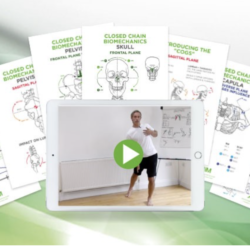 Biomechanics Of The Upper Body In Motion 2023 – Gary Ward
₹9,794.00
Biomechanics Of The Upper Body In Motion 2023 – Gary Ward
₹9,794.00
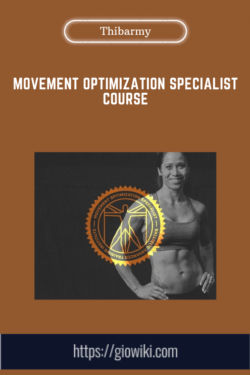 Movement Optimization Specialist Course – Thibarmy
₹4,814.00
Movement Optimization Specialist Course – Thibarmy
₹4,814.00
Biomechanics Of The Upper Body In Motion 2023 – Gary Ward
₹9,794.00

